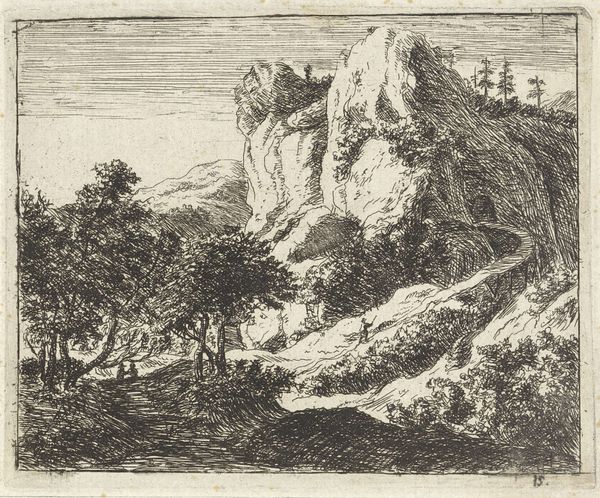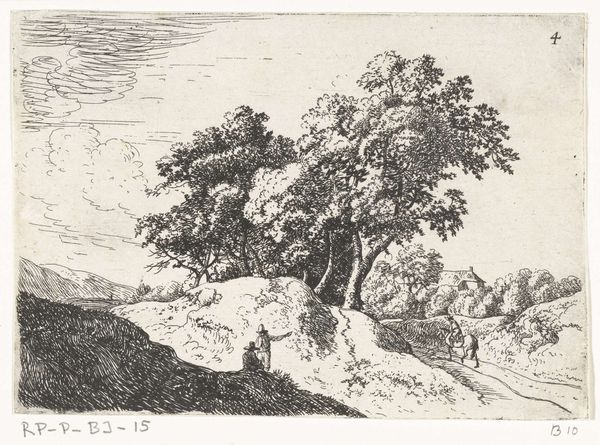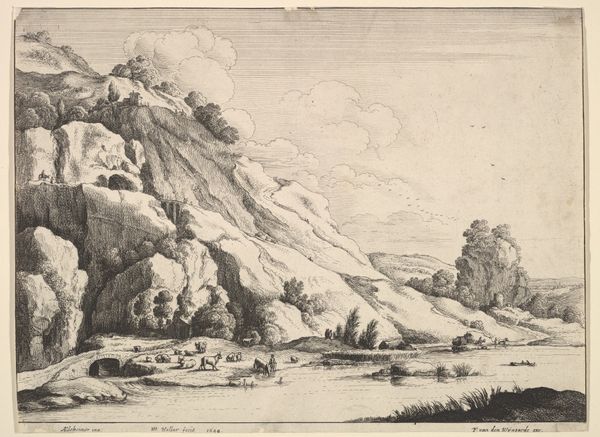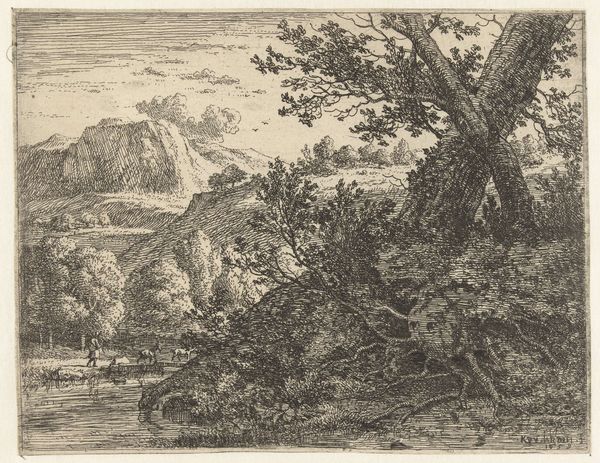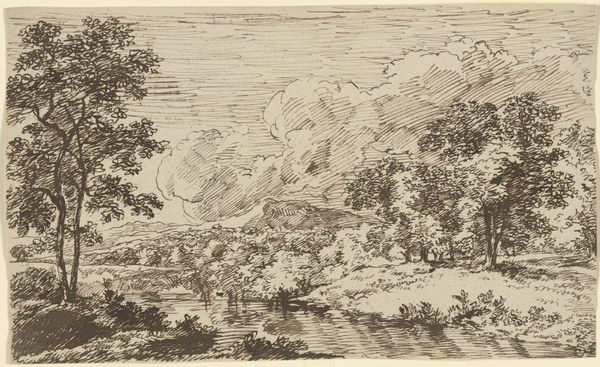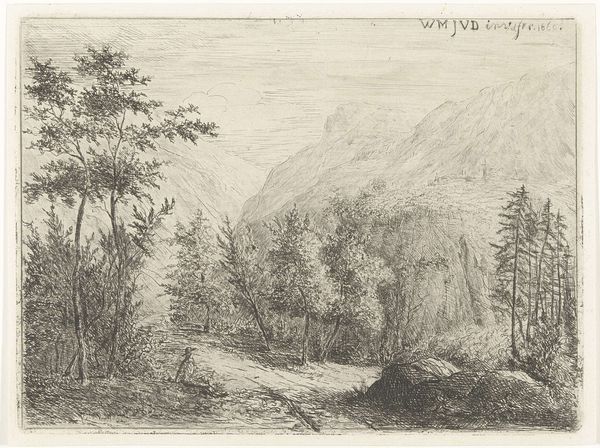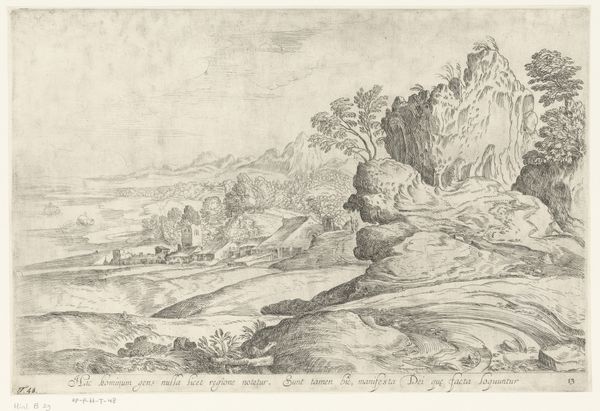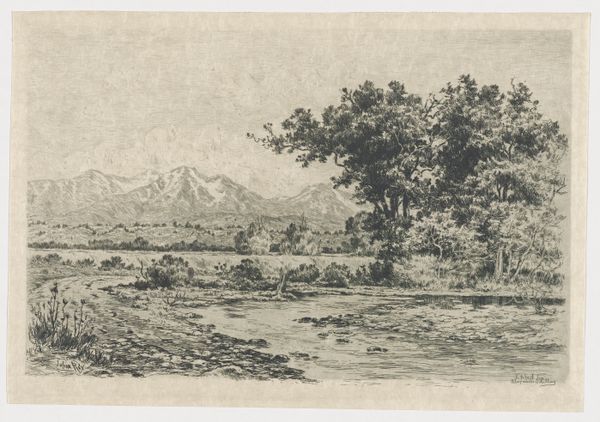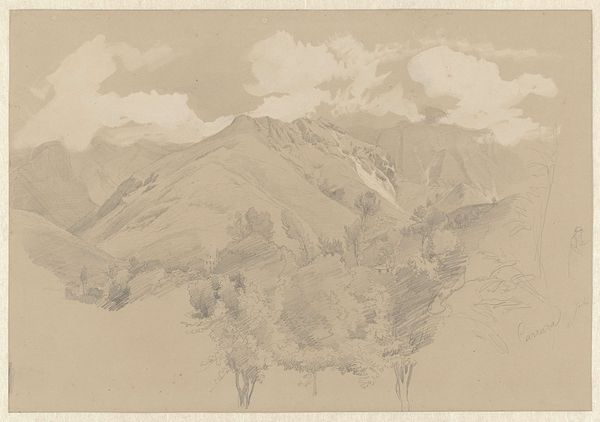
print, etching, engraving
#
dutch-golden-age
# print
#
pen sketch
#
etching
#
landscape
#
line
#
engraving
#
realism
Dimensions: height 138 mm, width 177 mm
Copyright: Rijks Museum: Open Domain
Curator: This is Karel du Jardin’s etching, "Landschap met vier bergen," from 1659. It's currently held at the Rijksmuseum. Editor: My initial impression is of stark contrasts – those sharply defined mountains set against the softer, textured foreground. And what a commanding presence the lone cow at the bottom adds. Curator: Indeed. It's a striking landscape. Considering it’s an etching, one appreciates Du Jardin's command of line to create a sense of depth and atmospheric perspective. There’s a distinct pastoral tradition echoing through it, wouldn’t you agree? It harkens back to earlier depictions of idealized nature. Editor: Absolutely. And it begs the question: what type of copper plate did he use, and how much did a plate like this cost at the time? And look at those thin lines, was he using a specialized tool or acid application? And how were such prints like this consumed - how did they circulate in 17th century Holland? This is an intricate interplay between the economics of printmaking and Du Jardin's artistry. Curator: From a symbolic perspective, consider the mountains themselves. In many traditions, mountains represent steadfastness, endurance, and even spiritual aspiration. Placed near that dilapidated building, we’re led to think of mortality and transience – everything is always being weathered by time. Editor: Weathered indeed. And I wonder about the labor of weathering. What processes formed those mountains in the first place? And the labor of the printer? We should also think about this in relation to social structures – who commissioned this and who was able to afford these prints? These prints provide insights into 17th-century patronage and consumption. Curator: A point well taken. Looking at it now, I am left to consider the powerful impact an artist can have using the barest of means—some etching tools, some paper and ink, and most importantly, his talent. Editor: Exactly—each decision that the artist makes during the engraving process has profound economic implications in shaping both their artistic reputation and cultural accessibility. It’s about materiality, making, and distribution—an economy of lines, really.
Comments
No comments
Be the first to comment and join the conversation on the ultimate creative platform.
